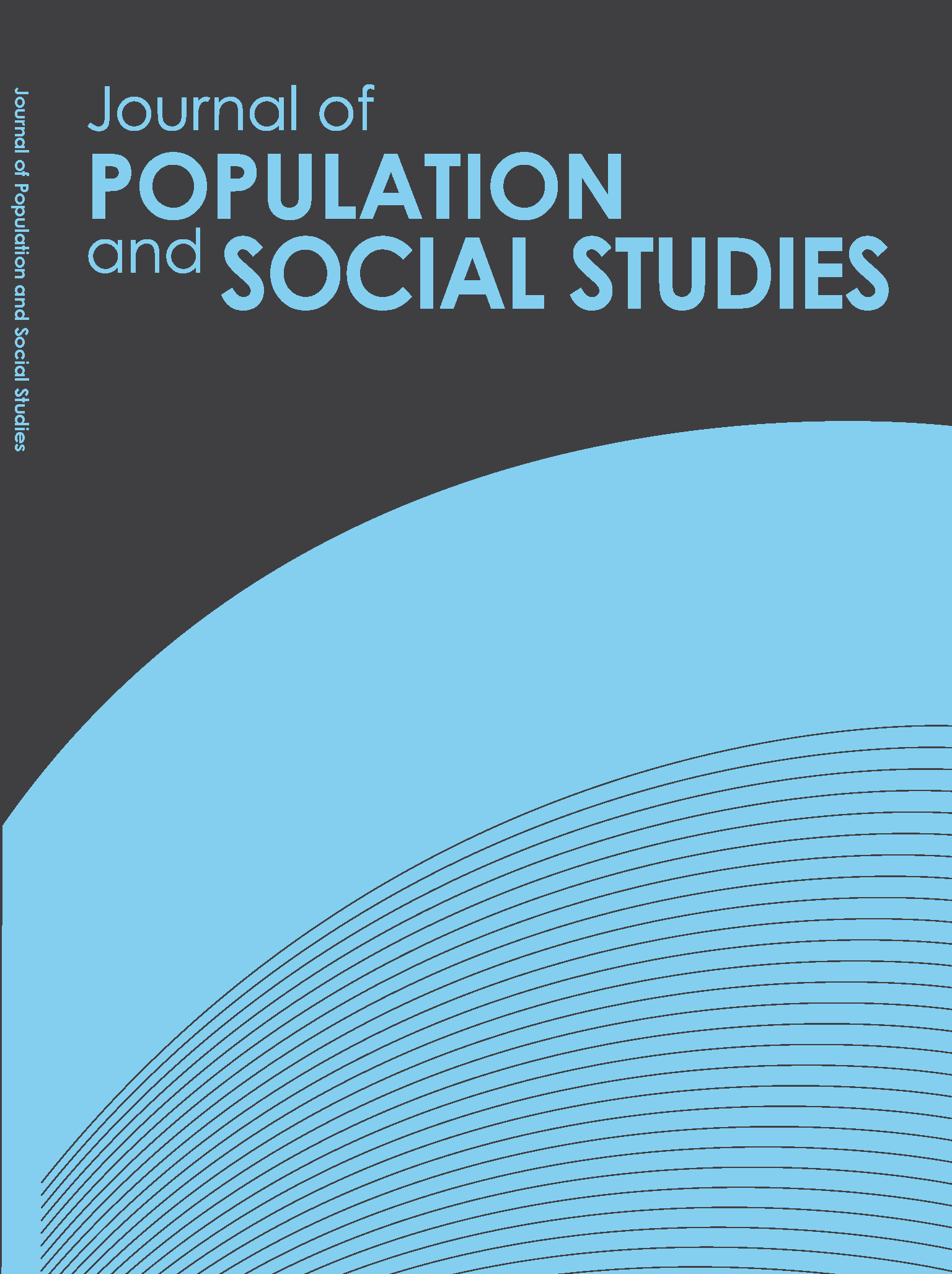Mining and Social Capital: A Micro-analysis from Odisha, India
Main Article Content
Abstract
The Sustainable Livelihood Framework has identified social capital as one of the means upon which sustainable livelihoods are built. Hence an attempt was made in this study to determine whether mining improves the social capital of a local community in the primary mineral producing state of Odisha, India. A comparative approach utilizing various statistical techniques with mining and non-mining areas was used. It was found that mining is having a significantly adverse impact on the social capital of the mineral-rich region of Odisha in the preference for the nuclear family rather than the larger family size; social tensions due to massive unemployment, migration, or non-payment of compensation for land acquisition; a higher level of alcohol consumption; and, low workforce participation of women in mining villages than in non-mining villages. Even less involvement in associations and groups and weak social networks have been found among people in the mining region. Thus, mining activity in the region has deteriorated, instead of improving, the area's social capital. This depreciation raises the issue of mining as being a truly sustainable source of livelihood. This issue makes it necessary for the administrative machinery to design a strategy appropriate for augmentation of the social capital in India's mineral abundant regions.
Article Details
References
• Adjei, E. (2007). Impact of mining on livelihoods of rural households. A case study of farmers in the Wassa mining region, Ghana. (Unpublished master’s thesis). Norwegian University of Science and Technology. https://core.ac.uk/download/pdf/52108421.pdf
• Akabzaa, T., & Darimani, A. (2001). Impact of mining sector investment in Ghana: A study of the Tarkwa mining region. http://www.saprin.org/ghana/research/gha_mining.pdf
• Bebbington, A., Hinojosa, L., Bebbington, D. H., Burneo, M. L., & Warnaars, X. (2008), Contention and ambiguity: Mining and the possibilities of development. Development and Change, 39 (6), 887-914. https://doi.org/10.1111/j.1467-7660.2008.00517.x
• Brubacher & Associates. (2002). The Nanisivik legacy in Artic bay: A socio-economic impact study. https://assembly.nu.ca/library/GNedocs/2002/000595-e.pdf
• Butler, B., Pick, D., & Dayaram, K. (2009). Social capital as “the missing link” in the growth process: Implications for strategic orientation of businesses and sustainable regional development in a remote location. Problems and Perspectives in Management, 7(1), 40-48. http://hdl.handle.net/20.500.11937/5009
• Das, A. (2013). Can mining provide a sustainable source of livelihood? A study in the mining regions of Keonjhar district, Odisha. https://www.academia.edu/9621252/Can_Mining_Provide_a_Sustainable_Source_of_Livelihood
• Department for International Development. (1999). Sustainable livelihoods guidance sheets. Department for International Development. London. https://www.ennonline.net/attachments/872/section2.pdf
• Fine, B. (2010). Social capital. Development in Practice, 17 (4 & 5), 566-574. https://doi.org/10.1080/09614520701469567
• Gibson, G., & Klinck, J. (2005). Canada’s resilient north: The impact of mining on aboriginal communities. Pimatisiwin: A Journal of Aboriginal and Indigenous Community Health, 3(1), 115-140. http://caid.ca/JAICH2005v3n1p115.pdf
• Grootaert, C. (1998). Social capital: The missing link? (English). Social Capital Initiative. Working paper series; no. 3: World Bank Group. http://documents.worldbank.org/curated/en/902971468764409654/Social-capital-the-missing-link
• Harriss, J. (2006). Social capital. In K. S. Jomo and B. Fine (eds), The New Development Economics: After the Washington Consensus. Zed Books.
• Hota, P., & Behera, B. (2016). Opencast coal mining and sustainable local livelihoods in Odisha, India. Mineral Economics, 29, 1-13. https://doi.org/10.1007/s13563-016-0082-7
• Indian Bureau of Mines. (2019). Indian minerals yearbook 2018 (Part I): Foreign trade. https://ibm.gov.in/writereaddata/files/11272019151842Foreign%20Trade_2018_FR.pdf
• Indian Bureau of Mines. (2019). Indian minerals yearbook 2018 (Part I): State reviews. https://ibm.gov.in/writereaddata/files/01032020122710State%20Reviews%20Summary_2018.pdf
• Indian Bureau of Mines. (2019). Indian minerals yearbook 2018 (Part II): Iron ore. https://ibm.gov.in/writereaddata/files/11272019151842Foreign%20Trade_2018_FR.pdf
• Indian Bureau of Mines. (2020). Indian minerals yearbook 2018 (Part I): Indian mineral industry and national economy. https://ibm.gov.in/writereaddata/files/02042020165333Indian%20Mineral%20Industry_National%20Economy_2018.pdf
• Ireland, P., & Thomalla, F. (2011). “The role of collective action in enhancing communities’’ Adaptive capacity to environmental risk: An exploration of two case studies from Asia, PLoS Currents, 24, 3, RRN1279. https://dx.doi.org/10.1371%2Fcurrents.RRN1279
• Kanji, G. K. (2011), 100 statistical tests. Vistaar Publications: New Delhi, India
• Keming, Y. (2007). Individual social capital and its measurement in social surveys. Survey Research Methods, 1(1), 19-27. https://doi.org/10.18148/srm/2007.v1i1.48
• Kumar, K. (2014). Confronting extractive capital: social and environmental movements in Odisha. Economic & Political Weekly, 49(14), 66-73. https://www.jstor.org/stable/24479385
• Maliganya, W., & Paul, R. (2017). Impact of large scale mining on the livelihood of adjacent communities: A case of Geita gold mine, Tanzania. Research report., 17/1, Dar es Salam, REPOA. https://media.africaportal.org/documents/RR_17_1.pdf
• Mining, Minerals, and Sustainable Development project. (2002). Breaking new ground: Mining, minerals and sustainable development. https://www.iied.org/mmsd-final-report
• Ministry of Mines. (2019). Annual report 2018-19. Government of India. https://mines.gov.in/writereaddata/UploadFile/English637094270360450099.pdf
• Mishra, B. (2010). Agriculture, industry, and mining in Orissa in the post-liberalization era: an inter-district and inter-state panel analysis. Economic & Political Weekly, 45(20), 49-68. https://www.jstor.org/stable/27807027
• Mishra, P. P. (2009). Coal mining and rural livelihoods: Case of the Ib Valley Coalfield, Orissa. Economic & Political Weekly, 44, 117-123. http://re.indiaenvironmentportal.org.in/files/Coal%20Mining%20and%20Rural%20Livelihoods.pdf
• Mishra, S. K., & Mishra, P. (2017). Do adverse ecological consequences cause resistance against land acquisition? The experience of mining regions in Odisha, India. Extractive Industries & Society, 4(1), 140–150. https://doi.org/10.1016/j.exis.2016.11.004
• Pantoja, E. (2000). Exploring the concept of social capital and its relevance for community-based development: The case of coal mining areas in Orissa, India. United States: World Bank, Social Development Family, Environmentally and Socially Sustainable Development Network.
• Sahoo, M., Mohapatra, D., & Sahoo, D. (2018). Livelihood dynamism in mining region of Odisha, India. International Journal of Environmental Science and Natural Resources, 8(1), 555727. https://juniperpublishers.com/ijesnr/IJESNR.MS.ID.555727.php
• Ware-Opoku, J. (2010). The social and environmental impacts of mining activities on the indigenous communities. The case of Newmont Gold (GH) limited (kenyasi) in Ghana. (unpublished master’s thesis). University of Agder. https://uia.brage.unit.no/uia-xmlui/bitstream/handle/11250/135149/Jones%20Opoku-Ware.pdf?sequence=1&isAllowed=y
• World Bank and International Finance Corporation. (2002). Mining and development: Treasure or trouble? Mining in developing countries. World Bank. http://www.masteas.com/treasure-or-trouble-mining-in-developing-countries/


